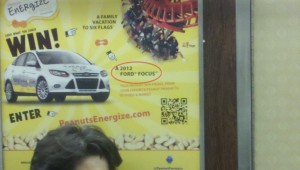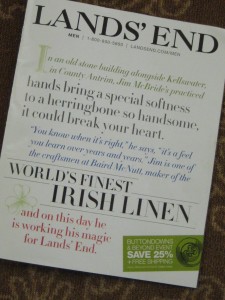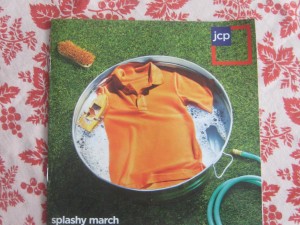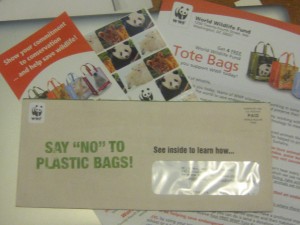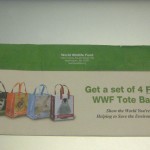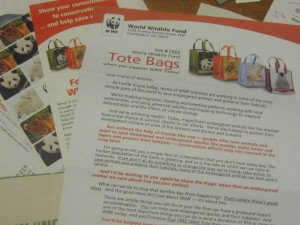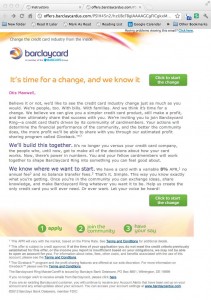
Well, this is different. This afternoon I got an email from BarclayCard, with the subject line “Crowdsourced Credit Card – Join the Conversation”. Inside is a message that starts:
Believe it or not, we’d like to see the credit card industry change just as much as you would. We’re people, too. With bills. With families. And we think it’s time for a change. We believe we can give you a simpler credit card product, still make a profit, and then ultimately share that success with you. We’re inviting you to join Barclaycard Ring—a credit card that’s driven by its community of cardmembers. Your actions will determine the financial performance of the community, and the better the community does, the more profit we’ll be able to share with you through our estimated profit sharing program called Giveback.™3
The actual terms of the card are pretty good. 8% annual APR, no annual fee and no balance transfer fees. But what’s really interesting is the Giveback feature. So it’s like a rewards program, except the reward will be determined in part by the above mentioned Giveback program.
There’s very little about this card in Google at the moment, and it appears I may be an Alpha recipient. Nerdwallet has a good writeup in which they quote this little bit from the Barclay’s website: “This profit sharing feature is not based on the actual profits of the program. Instead, the Giveback program contains a transparent calculation that is used to determine what will be shared with the community members and which may or may not approximate actual profits.”
Color me a bit suspicious and cynical, especially because I have no idea how this solicitation made its way to my inbox. There is no attribution to a third party transmitter, and looking at my email archive it does not appear that I have a relationship with Barclay’s unless they are the same folks who sell wine by mail. But, I’ll go ahead and check it out and report back if I find anything interesting.
